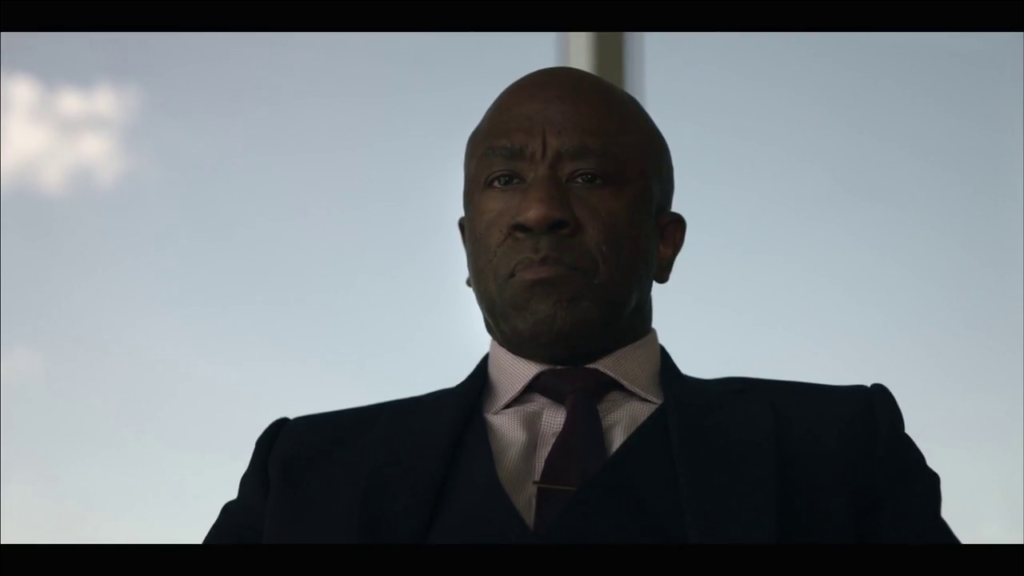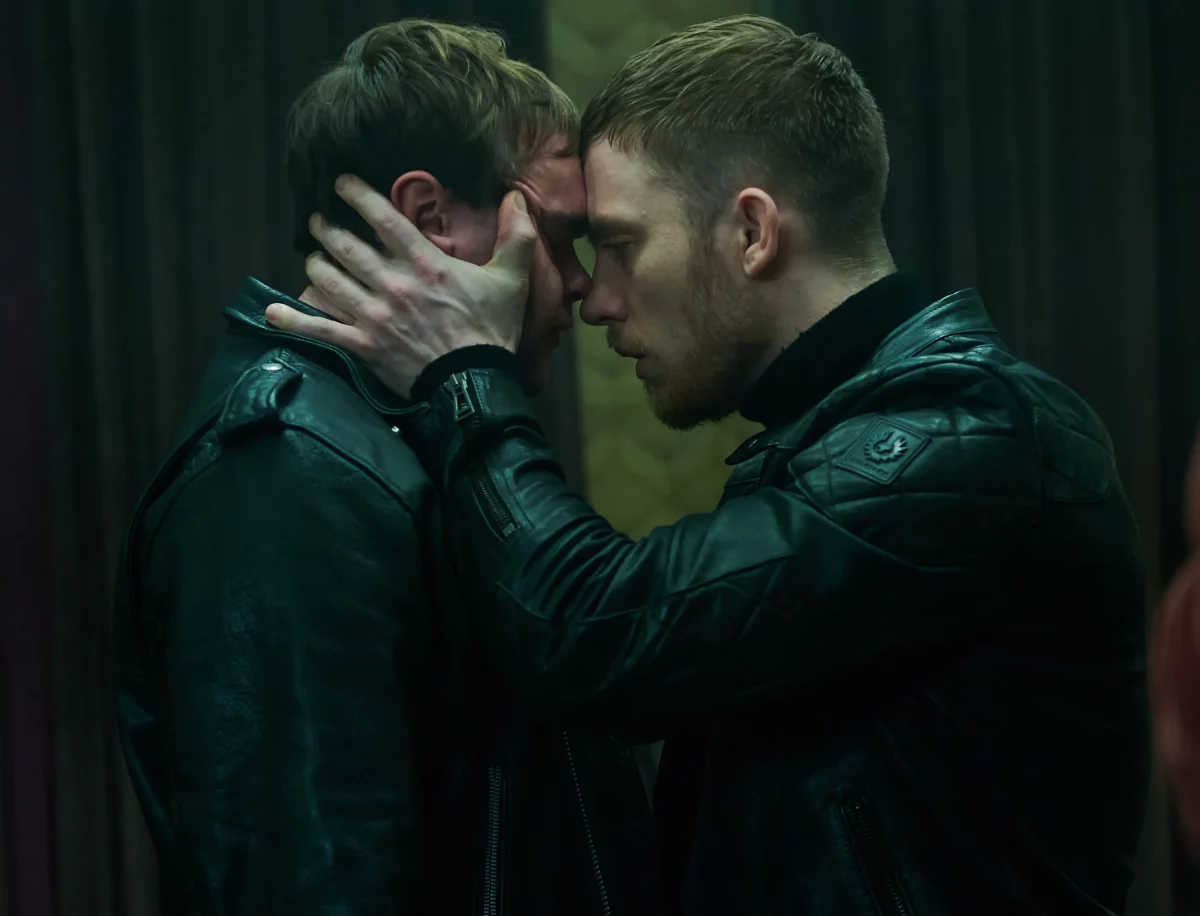Gangs of London
Season 1
Episode 3
The law of the concrete jungle
“Gangs of London” is quite a freighted title to give to a piece of media.
To begin with, it deliberately associates the product it’s attached to with Martin Scorsese’s 2002 epic Gangs of New York, and it’s not the only work to have done so; the 2012 Hindi film Gangs of Wasseypur, for example, beat Gangs of London to the punch by eight years. The “Gangs of…” prefix is an adaptable one, conferring the promise of epic scope to any location it’s applied to, similar to how “Once Upon a Time in…” has been retooled and repurposed over the decades. More than Sean Wallace, more than Elliot Carter, more than any one member of the cast, the main character of Gangs of London is the city.
The difference between Gangs of London and Gangs of New York, though, is that Gangs of New York was based on a non-fiction book published in 1928 that documented the history of NYC gang warfare, and the film was directed by a man who grew up in Little Italy in the 40’s and 50’s. For all that Gangs of New York is a flawed movie, there’s a certain, ineffable authenticity to it.
Gangs of London, by contrast, was based on a shovelware PSP game, and the show was created by a couple of guys from rural Wales, both of whom had spent a good chunk of their adulthood living in Indonesia. By Gareth Evans’s own admission, he hasn’t spent a great deal of time in London throughout his life, and his vision of the city is informed more by pop culture and film than by headlines or lived experience.

This is in line with his whole career; what gets Gareth Evans fired up as a creator are the ways he can riff on tropes and genre conventions; not the perspective he can bring to contemporary or historical political realities. A term that he repeatedly uses when describing his approach to Gangs of London is that it presents a “Gothamised” version of the UK capital; a city understood as a comic-book splash-page of itself.
…it presents a “Gothamised” version of the UK capital; a city understood as a comic-book splash-page of itself.
What, then, is London, as understood in mythopoeic, “Gothamised” terms? The third episode of Gangs of London (written by Peter Berry, and directed again by Corin Hardy) is the first in the show that really starts to present that idea of the city as a complex, dynamic organism. We get our first proper look at the Wallace organisation’s legitimate facade; their public-facing business is construction, erecting luxury residential towers in the heart of London that no-one ever expects to actually live in. They’re at once fodder for real-estate speculators, and a grand money-laundering project. The construction of high-rise buildings is a recurring motif; an early scene, a tense conversation between Sean Wallace, Ed Dumani, and Alex Dumani, is staged in a high-rise executive office. In the background, we see partially complete high-rises, surrounded by cranes, crawling skyward, looming over The Gherkin behind them.
As of 2022, London has graduated to the fourth-most expensive city to live in the world, behind only Hong Kong, New York, and Geneva. Meanwhile, between 2011 and 2020, the number of people using foodbanks in London increased by almost 2,000%.
Full disclosure, reader: I, your British correspondent at The Goods, haven’t spent that much time in London either. I’ve been there on business trips, and for concerts a few times, but I’d always up and leave the next day at the first opportunity. This is London, as it’s understood from a distance: the slowing heart of a contracting empire; kept artificially alive by investment from overseas plutocrats; massively unequal and socially stratified. It’s an impression that, I think, Gangs of London captures very well; cutting back and forth between executive boardrooms fifty storeys in the air, and smuggling operations concealed in the dingy basements of corner shops.

The actual plot of the episode centres on Lale, who, thanks to Billy’s reckless but effective initiative, has been found out as the one behind the hijack of Asif’s heroin shipment. This discovery lays the groundwork for a new proxy battle between Sean and Ed; Ed favours disposing of Lale, quickly and quietly, and getting the Wallaces back in good standing with Asif, one of their most influential and powerful clients. Sean, who butted heads with Asif in the previous episode and views him as a prime suspect in Finn’s assassination, has his own designs on how to manipulate Lale for his own purposes. After the massacre at the Traveller campsite, something appears to have awakened in Sean; a willingness to use more Machiavellian tactics; to be a scalpel, not a broadsword.
Inevitably, Elliot is drawn into the middle of Ed and Sean’s pissing match, when Ed recruits him to aid in Lale’s assassination. Complicating matters still further is Cole (played with delectable menace by Scottish martial artist and stuntman Gordon Alexander), the sociopathic fixer hired by Sean to kidnap Lale’s sister and nieces.
I have to imagine the producers at Pulse Films realised they were onto a good thing when they cast Iranian-born actress Narges Rashidi in the part of Lale, and it’s in Episode 3 that she emerges as a standout member of the cast for her charisma and screen-presence. She’s an exceptionally beautiful woman – look, I’m not made of stone, I won’t pretend that’s not a factor – but beyond that, she has a fiery-eyed intensity to her performance that persuades me of the vengeful strength of her character’s convictions.
[Rashidi] has a fiery-eyed intensity to her performance that persuades me of the vengeful strength of her character’s convictions.
She gets to showcase that conviction in the absolute barnburner of an opening scene, a flashback to an ambush in Turkish Kurdistan, 6 years earlier. After picking her way out of the wreckage of a destroyed pickup truck, Lale takes up an AK-47 and shreds through a compound of enemy soldiers, only to find the body of her husband, chained to a metal slab and cooked alive. Asif, we learn, was responsible for betraying her PKK regiment to the Turks.

When Episode 3 focuses on Lale, it sings. Her determination to see her comrades in the Kurdish-Turkish conflict comes into tension with her need to see her sister and nieces safe, and the climactic scene where Sean encounters her at the airstrip draws out this tension to tortuous, exquisite extremes. Taking place at night, in the rain, backlit by the burning bales of paper cash she’d meant to send back to Kurdistan, the confrontation has an almost operatic grandeur to it; one of the most striking images Corin Hardy ever assembled for the show, and a serious achievement for cinematographer Martijn van Broekhuizen.
The Lale material is the spine of the episode, anyway. Three episodes into a nine-episode season, it definitely feels like we’ve arrived at the point where Gangs of London’s plot is growing diffuse, with a multitude of concurrent plotlines, and every question that’s answered giving rise to two more. A good chunk of the early runtime is given over to Marian’s investigation of her late husband’s finances, revealing a multi-million-pound investment in a private island and luxury yacht christened the “Floriana.” Meanwhile, Elliot’s handler, Vicky Chung (Jing Lusi) investigates the block of flats where Finn was killed; she comes across an Albanian woman who claims that her neighbour, Floriana, went missing the same night that Finn was shot, and that she’s pregnant with his baby. COULD these TWO THINGS be CONNECTED???
This sort of silliness is, to an extent, inherent to this format of storytelling. Very seldom does prestige, serialised genre TV have nine consecutive hours of drama worked out such that all of it is structurally integral. Episode to episode, the writers have to contrive arbitrary, short-term dramatic crescendos to hook the audience, while letting the long-form conflicts simmer in the background, teased for hours and hours before they pay off. The novelistic scope of something like Gangs of London’s first season is unavailable to feature films; the trade-off is inefficiency, a certain number of narrative blind alleys just something viewers have to cope with.
Episode 3 does, at least, have a short-term crescendo worthy of remembrance. Gareth Evans once again takes the reins from Hardy to direct the brutal showdown between Elliot and Cole, set in the darkened confines of an under-construction penthouse apartment. Lit in high-contrast hues of green and red, the two combatants run out of ammunition firing through walls and doors at one another, before finally getting up close and personal. Cole comes after Elliot with a fire-axe, Elliot evading by one hair’s breadth after another.

There was a risk of Gangs of London getting repetitious and stale, here. Elliot throwing down one-on-one against an evenly-matched opponent swinging an edged weapon in a dingy, abandoned tower block is pretty reminiscent of the fight scene that ended Episode 1. I’m willing to let it slide; partly because I’ve seen the rest of the show, and Gangs of London never really relies on this template for an action climax again; partly because Jude Poyer’s choreography is still so ridiculously good.
…Jude Poyer’s choreography is still so ridiculously good.
Also, because, in a twist to the setup, Elliot actually loses the fight. It’s a harrowing, bloody-knuckled struggle, but Cole does eventually get the best of him, and prepares to butcher Lale’s family where Elliot can watch. It’s only when he’s limping down the hallway, dragging his axe behind him, that the elevator doors open, and, emerging, Ed shoots him dead, placing Elliot even more in his pocket than ever.
It’s a bracing ending. Episodes 1 and 2 presented Elliot as kind of indestructible, making him look like he could manhandle his way through almost any situation. Episode 3 gives us a necessary corrective, making it clear that Elliot is not a superhero, that he’s vulnerable to the same forces as the rest of the London underworld, and that he’ll have to be wily to survive going forward.
What I’m less keen on is the burgeoning relationship between Elliot and Shannon Dumani (Ed’s daughter). Ṣọpẹ́ Dìrísù’s performance as Elliot is, generally, excellent. Dìrísù is, from everything I’ve seen of him, a superb, intelligent actor (I’d strongly advise anyone reading this to check out His House, one of the most slept-on horror films in recent years, for further evidence), and his performance of Elliot as a wounded man, with sensitivity and understated dignity, does a lot to anchor Gangs of London in humanity, where it could easily have become a parade of snarling grotesques.

But, I don’t think he has any particular romantic chemistry with Pippa Bennett-Warner, and the characters’ scenes together, where they bond over their respective absent spouses (Elliot’s is dead; Shannon’s is in prison) feel somewhat stiff and inorganic. One gets the sense that this tremendously macho show needed these two characters to get together, but no-one involved felt comfortable writing the nuances of attraction that would make it convincing.
Still, by and large, Episode 3 finds Gangs of London firing on all cylinders, delivering on the promise of the premise and then some. It might be my favourite non-Evans-directed episode in the whole show.
- Review Series: Gareth Evans
- Review Series: Gangs of London
Is It Good?
Very Good (6/8)
More Gangs of London reviews
Andrew is a 2012 graduate of the University of Dundee, with an MA in English and Politics. He spent a lot of time at Uni watching decadently nerdy movies with his pals, and decided that would be his identity moving forward. He awards an extra point on The Goods ranking scale to any film featuring robots or martial arts. He also dabbles in writing fiction, which is assuredly lousy with robots and martial arts.

